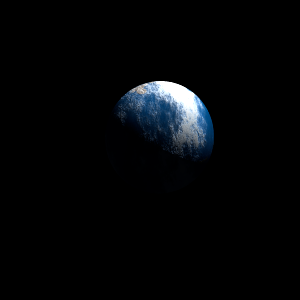|
|
Space Astro
|
Info for exoplanet "Dorarefran"
| Scientific (actual) data |
|---|
| Name | GJ 179 c |
| Planet status | Confirmed |
| Mass sini | 0.0154 |
| Orbital period | 3.4798 |
| Semi major axis | 0.032 |
| Orbit eccentricity | 0.04 |
| Discovered | 2019 |
| Updated | 2019-06-20 |
| K | 4.04 |
| Publication | Published in a refereed paper |
| Detection type | Radial Velocity |
| Mass measurement type | Radial Velocity |
| Star name | GJ 179 |
| Right ascension | 73.03° |
| Declination | 6.48° |
| Mag v | 11.96 |
| Star distance | 12.3 |
| Star metallicity | 0.3 |
| Star mass | 0.357 |
| Star radius | 0.38 |
| Star sp type | M3.5 |
| Star temperature | 3370 |
| Wikipedia article | GJ 179 c |
Back
| |
| Fictional info (?) |
|---|
| Suggested name | Dorarefran |
| Planet type | Hot planet |
| The planet telescopically displays the complete range of phases, similar to Venus and the Moon, as it moves in its inner orbit relative to GJ 179, which reoccurs over the so-called synodic period approximately every 116 days.
As seen from GJ 179, in a frame of reference that rotates with the orbital motion, it appears to rotate only once every two years. |
| Estimated population | 29000000000 |
| Atmosphere | Carbon dioxide | 49% |
| Oxygen | 40% |
| Methane | 10% |
| Water | 0.26% |
| Atmospheric pressure | 0.16 bar |
 |
| No known satellites |
| Google search for Dorarefran |
|
Website by Joachim Michaelis
|
|
|
|